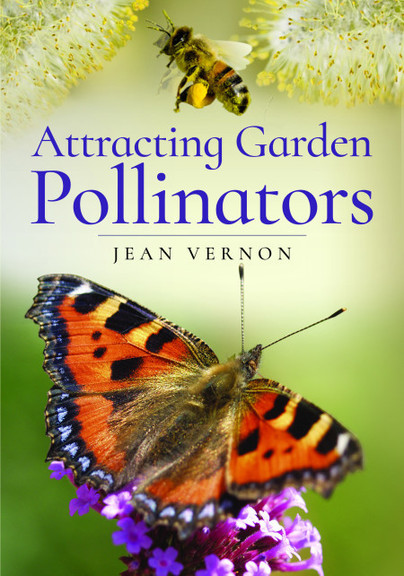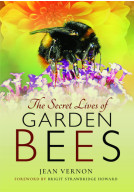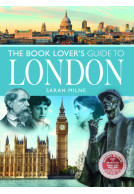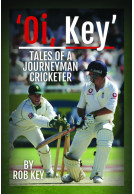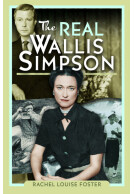Attracting Butterflies, Bees and Other Garden Pollinators (eBook)
Imprint: White Owl
File Size: 110.9 MB (.epub)
Illustrations: 100 colour illustrations
ISBN: 9781526711922
Published: 30th May 2022
| Other formats available - Buy the Hardback and get the eBook for £1.99! | Price |
|---|---|
| Attracting Butterflies, Bees and… Hardback Add to Basket | £17.50 |
Attracting Garden Pollinators is a friendly, accessible, information packed guide to gardening for and with pollinators. Pollinators are in trouble, but our gardens can help. Gardens represent a vast, varied ‘nature reserve’ packed with plants rich in nectar and pollen to sustain these delicate creatures. This book explores the role that pollinators play and how gardeners and people with gardens can do something to help attract and support them. From butterflies (and their caterpillars - with host plant information) to surprising pollinators (moths, wasps, beetles flies and hornets) and of course including honeybees, hoverflies and bumblebees, this book will offer an insight into their fragile existence, lifecycles and their vital role in the food chain and the natural cycle.
Jean Vernon is the Best-Selling author of The Secret Lives of Garden Bees.
Article: Ways to keep your Garden Buzzing
Garden News September 20th. 2025
Following on from her first book The Secret Lives of Garden Bees, Jean Vernon`s second book showcases a whole new set of garden pollinators. In it she provides plenty of information on how to support and attract them into our gardens by choosing the right plants and providing habitats for nesting and overwintering. This plethora of information is presented in an engaging and interesting way, with many excellent photographs, all of which make the book a joy to read.
The HPS Journal - Hardy Plant Society, Autumn 2023
As featured in 'It turns out we have been saving the wrong bees'.
The Telegraph
Read the full article here!
As featured in
Hardy Plant Society Journal, Spring 2023
As featured in 'Look After Your Garden Minibeasts'
Garden News, 25th February 2023
The gorgeously vibrant cover drew me to this book, plus I’ve become very garden-aware over the past few years.
For the Love of Books
This book is described as a ‘friendly, accessible, information-packed guide’, and it doesn’t disappoint. Even the miniature images of flowers next to the pages numbers make this a delight for the garden bookshelf.
Vernon’s analogy of a pollinator being like a postman was really helpful too and could be an excellent help for parents teaching very young gardeners. It feels as if the author is talking you through the book with her humorous, conversational style of writing. The photography is amazing too.
A book that made me smile from cover to cover. Just beautiful.
As featured in 2022 Gardening Books Roundup
Morning Star
It is enjoyable to read and incredibly useful. A winning combination.
Blackberry Garden
Read the Full Review Here
As featured in
Amateur Gardening
As featured in Wildlife World's podcast - listen here!
Wildlife World
As featured in the article: 'Surprising garden pollinators'
The Countryman
As featured in
Kitchen Garden
As featured in the article 'Be Bee Savvy this Summer!'
Garden News, 18th June 2022
This book provides an overview on the principles and practices of attracting a wide spectrum of pollinators to gardens, as well as insights on the natural history and habitat needs of specific insects relationship in the wider ecosystem. The book concludes with profiles of important ornamental, veg and fruit plants.
Garden News, 28th May 2022
If you want to encourage pollinators, share your garden with wildlife for the overall benefit of your garden, the wider community and the planet then have a read of Jean's lovely book with some fabulous photography. There will undoubtedly be bees you've never seen before and insects you perhaps hadn't realised were beneficial in the garden.
Ellen Mary Gardening
Read the full review here
The book closes with a section on further reading and organisations that will benefit from your support, and a meticulous reference section and index.
The Garden Post
Serious facts about the plight of our garden pollinators are counter-balanced by Jean’s appreciation that fun facts will entice and hook readers and convert them into garden-pollinator warriors!
Read the full review here
The perfect book to get you started, with plant suggestions, bug habitats and houses you can put in your garden to encourage more pollinators. Stunning photos and just al round brilliant information.
Niki Preston
Read the full review here
I really like this book, I like how Jean writes as it is informed but accessible. It is the sort of book you want to close to hand so that when you see an insect pollinating you can go and look up what it is if you are not sure. You may also want this to hand when planning new planting so that you choose plants to attract more pollinators into your growing space be that a garden, allotment or window box. It is enjoyable to read and incredibly useful. A winning combination.
Blackberry Garden
Read the full review here
Her book enlightens readers to the diverse range of insects that clasify as pollinators... it's not just bees.
Debi Holland Gardening
Read the full review here
Written with humour and compassion, and an excellent companion to her best-selling debut, The Secret Lives of Garden Bees, Jean Vernon’s new book, Attracting Garden Pollinators, encourages us all to look closer, pay attention, and appreciate the huge contribution these tiny creatures make, before it’s too late.
Agents of Field
Read the full review here
If you’ve been listening to BBC Radio Leicester you’ll know that Attracting Garden Pollinators has twice been my Book of the Week. I’m happy to recommend such an easy to read and information-packed book. Jean writes in a friendly and accessible way. Her passion for nature and wildlife shines through and you can’t help but get caught up and carried along by her enthusiasm for the subject. Simple ways to help pollinators are suggested, and you don’t need a huge garden to make a difference. Even a windowbox or container can be a five star diner!
Bramble Garden
Read the full review here
Jean is a delightful companion who gently takes you by the hand to show you what's actually there. She was totally captivated by nature from an early age and it's refreshing to find someone who still finds that world fascinating, and now has the knowledge to match. She provides plenty of references at the end of the book should you wish to follow her and learn more.
Veg Plotting
The book's a natural companion to Jean's previous one, The Secret Lives of Garden Bees. It's also a timely publication judging by the amount of chat I've seen on Twitter lately about the absence of swifts and swallows over our gardens this summer. If we welcome all kinds of insects to our gardens, then we'll provide a better space for our more obvious and well-loved garden visitors too.
Read the full review here
As featured in
Birdwatch
Full to the brim with facts, figures, information and beautiful pictures all about how we can all do just that bit more for our pollinator friends.
View From The Potting Bench
Perhaps most importantly, aside from showing how we can bring them in and create a space for them – this book really gives us a reason and shows us the purpose for why we should be doing this. I wont say much more than that as I don’t want to repeat Jean’s wonderful book but this really highlighted for me just how we all have that power to make even the smallest difference. With one or two more pollinator friendly plants added here and there we’re creating a veritable buffet for them and that’s certainly no bad thing!
Read the full review here
Every time we watch a gardening programme - and there are thankfully quite a few on TV at the moment, with presenters such as Alan Titchmarsh, Charlie Dimmock and all the people who present the Chelsea Flower Show programmes - the overwhelming message is that we should be planting shrubs and annuals that attract the bees and the butterflies. In this amazing book by Jean Vernon, herself an expert on bees in all their glory, explains how the business of pollination is carried out by these amazing creatures, and how various differing plants attract them and allow them to help us in lour fight to stay alive. Beautifully illustrated, it's a treasure trove of information and a wonderful keepsake too. One of the nicest books it's been my pleasure to look at this month...
Books Monthly
As featured in
Garden News
I suspect that most people when we talk about pollinators, simply think about bees, whether bumblebees, honey or solitary bees. They may not be aware that there are many other pollinators of flowers which they did not consider as pollinators. This book explains what a pollinator is and what plants to plant for them and what they need. So who are these other pollinators? It focuses on the groups of pollinators you might find in your garden and offers ways to support them and attract them to your plot. Butterflies, day and night flying moths, hoverflies, beetles, other flies and wait for this, hornets and wasps are also pollinators! It explains what pollen actually is and how nectar is basically used as ‘bait’ for pollinators. Quite pleasantly and a nice little touch I thought was that it highlights a few quirky characters unravelling some of their extraordinary stories with the hope that you might fall in love with one or two more.
Nurturing Nature
Many people like to attract butterflies and why not. However, butterfly larvae, i.e. caterpillars, need plants to eat before they can become butterflies. This book has host plant information for those who want to help butterfly numbers increase. This can open up a whole area of interest knowing which caterpillars will become a specific butterfly. It is beautifully written in simple language and lavishly presented with some excellent photographs.
It would make an ideal present for anyone with a garden and an interest in the little creatures that make such a habitat vibrant with colour and interest. So put your brew down and go and have a look at these interesting and helpful little creatures.
Read the full review here
As featured in the article: 'Power to the pollinators'
The Daily Telegraph
Rating: 5 out of 5 stars
NetGalley, Wendy M Rhodes
What a beautiful book with a lovely cover. With all that's happened in the world recently, I found this book fascinating, and interesting to know that if we each do our bit we can make a difference. Now to put it all into practice. Wonderful and inspirational reading.
As featured in
The Daily Telegraph - 7th May 2022
Friendly, accessible guide to gardening for and with pollinators.
RHS Journal, April 2022
Rating: 5 out of 5 stars
NetGalley, Red Atkins
This was a very interesting book...who knew how much was involved with pollinators? There were so many things I never really realized about the process. This is a great book to have as a reference book. I'm heading out right now to get more plants of the right type to attract the insects that I want.
Rating: 5 out of 5 stars
NetGalley, Annie Buchanan
The introduction covers the basics of pollinator entomology and concepts: what are beneficial insects, how they work and why they're important. The intro is followed by a "bestiary" with some of the most common groups of pollinators (butterflies, moths, bees, wasps, hoverflies, flies, and beetles). The rest of the book covers habitats, attractor plants, and thuggish plants like bindweed and Japanese knotweed (and some techniques for controlling them).
The book is lavishly illustrated with clear color photos throughout. The photos show featured insects in various life stages including pupal and adult which make identification easier. Tips and extra info is included in highlighted text boxes throughout. Photo captions are well written and easy to understand. The chapter on useful plants for native pollinators and parasitoids has been written with a good eye toward garden design and diversity. There are a lot of plants which are beautiful and useful and which people will want to plant in their gardens (instead of hiding the weedy looking ones).
Five stars. This would make a good selection for public or school library acquisition, makers groups, gardening and activity groups, home and community gardeners, smallholders, and the like.
As featured in: 'Blooms for butterflies'
Modern Gardens
I would consider this a great science-based reference on insect pollinators that would be useful for any gardener. While it has a good amount of detail, it's still written in a way that's understandable by the lay gardener. There are an abundance of photos... The author also provides a generous list of references at the end of the book.
NetGalley, Catlin Penn
Attracting Garden Pollinator's is exactly what it says on the tin!
NetGalley, Frankie ~ Chicks, Rogues and Scandals
I have always been an advocate at welcoming wild creatures and pollinators, especially into my garden, I have so many bee-loving plants already so most of what is featured in this book I knew already but there are some things that I will be taking away to enhance my pollinator friendly borders.
This is a wonderful and eye-catching selection of colour photograph's which show the little critters in their full glory, which is very handy if you are looking to spot and keep a lookout for what's popping up in the garden. Plus full images of the flowers which will attract all manner of creatures.
it is evident that the author has a lot of passion for the subject, the writing it clear and precise makes the book incredibly easy to read, it's laid out in a way that helps you flick through and jump to a particular section - always handy!
It's a very informative and knowledgeable book which will appeal to anyone who has a passion for gardening, for attracting pollinators and basically for helping the environment as we all know how important bees are for the world, so helping pollinators helps the environment.
Overall, a easy-to-read, basic and insightful book.
Rating: 5 out of 5 stars
NetGalley, Shyla Fannan
I love the tone of this book! I wasn’t surprised to find out it’s written by an English author as I connect better with the UK’s sense of humor and style... there is a LOT of great information presented in a very digestible manor.
About Jean Vernon
Jean Vernon writes about wildlife for the RHS Journal – The Garden. She is a contributor to the gardening section of The Daily Telegraph and has written many articles on bees, beekeepers and the needs of garden bees. Fascinated by bees and the environment since a youngster, she is a tree and bee guardian and passionate about championing bees of all sorts. It is her mission to unravel, demystify and explain the intricate balance of nature in your garden and to introduce you to the familiar and unfamiliar bees that live, breed and breathe within the garden habitat.







